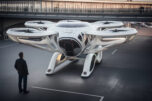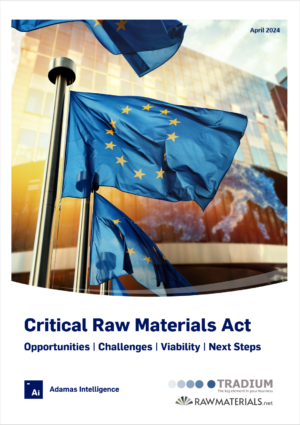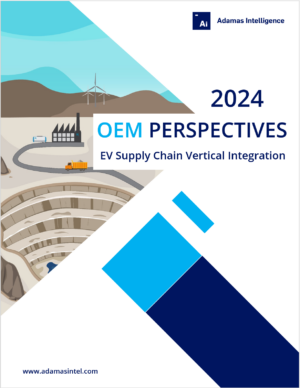NdFeB powder demand poised to re-accelerate post-2030
With the commercialization of solid state drives (SSDs) and resultant gradual decline in consumer hard disk drive (HDD) sales since at least 2015, global NdFeB powder demand growth has been suppressed and, over the near-term, is expected to underperform growth of sintered NdFeB alloy demand, which is being propelled higher by EVs, wind power generators and other fast-growing applications. However, over the medium- to long-term, with the acceleration of robotics and advanced air mobility sectors, we expect to see a strong revival of NdFeB powder demand and production starting from around 2033.

With the commercialization of solid state drives (SSDs) and resultant gradual decline in consumer hard disk drive (HDD) sales since at least 2015, global NdFeB powder demand growth has been suppressed and, over the near-term, is expected to underperform growth of sintered NdFeB alloy demand, which is being propelled higher by EVs, wind power generators and other fast-growing applications.
However, over the medium- to long-term, with the acceleration of robotics and advanced air mobility sectors, we expect to see a strong revival of NdFeB powder demand and production starting from around 2033.
Humanoid robots
In a humanoid robot, there are a variety of different actuators used throughout. Frameless torque motors with high integration, precision motion control and efficient torque output are widely used for larger joints and rotational degrees of freedom (e.g., hips), while linear motors are commonly used for smaller joints and linear degrees of freedom (i.e., wrists, hands).
For larger joints, we believe sintered NdFeB magnets will remain the variety of choice going forward for humanoid robot actuators but for smaller linear motors and servo motors we see potential for growing use of bonded and/or hot deformed NdFeB ring magnets, contributing to a re-acceleration of NdFeB powder demand over the latter half of the forecast period.

Advanced air mobility
In the case of motors for advanced air mobility, they require extremely high torque density and high power density, boding well for future use of surface mounted permanent magnet radial flux motors and axial flux permanent magnet motors, translating to greater use of magnetic materials per motor versus a comparable interior permanent magnet radial flux motor used in an electric vehicle.
For surface mounted permanent magnet motors, like servo motors for robots, we again see potential for growing use of hot deformed NdFeB ring magnets, helping contribute to a re-acceleration of NdFeB powder demand in the 2030s.

Moreover, towards the goal of maximizing power and torque density, we see potential for growing use of magnetically geared (i.e., magnetically coupled) motors in the years ahead (as opposed to conventional mechanically geared motors) which could further boost demand for NdFeB, both sintered and hot deformed varieties, to even greater heights than projected herein.
At present, we expect global annual production of bonded and hot deformed NdFeB magnets to double between 2030 and 2040 but if these magnets come to proliferate both motors and gearboxes in the years ahead, this figure could escalate substantially.

More information?
Check our latest Rare Earth Magnet Market Outlook to 2040 annual report – the industry’s go-to reference for magnet market intelligence.






